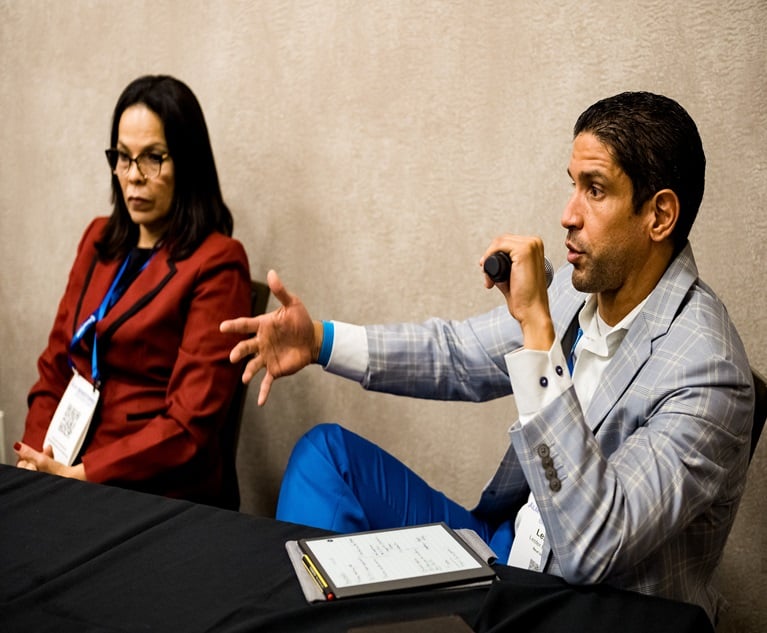You don't earn customer loyalty by perfecting a great salespitch. Successful agents build a solid book of business byproviding real dollars-and-cents value to their clients. Florida'sworkers' compensation arena, with its state-mandated sticker price,skillful underwriting departments, and aggressive claims and losscontrol programs, can be a large factor in the ultimate bottom-linecost to your clients.
|Knowing Your Carriers
|Building a strong rapport with a handful of go-to workers'compensation carriers is essential in helping you develop andmaintain profitable relationships. Understand who you arepartnering with, and choose carriers you know to be financiallysecure, can cover claims, and will consistently pay dividends aspromised. Select carriers that adhere to a healthy, long-termunderwriting discipline that can withstand market fluctuations.They will ensure that your clients receive all applicable credits,discounts, or dividends. They also have the resources to providevaluable services to help your clients control losses, manageclaims and–ultimately–lower their premium.
|Controlling Losses
|Nothing saves money for your client quite like proactive losscontrol. Remember, every dollar spent or saved by a carrier affectsyour clients' premiums, so preventing injuries is the primary wayto keep costs down.
|Many employers provide safety training to new employees. Then,if an injury occurs, they'll retrain, hoping to prevent futureaccidents. However, this approach has a low success rate.Partnering your clients with a carrier that offers proactive losscontrol services will help your clients investigate the underlyingcause of the problem. For example, are employees using equipmentimproperly because of operational pressures, such as unrealisticdeadlines? Sparking conversations like this and the resultingoperational changes can have a high success rate in eliminating theexposure.
|Step outside of the workers' compensation picture for a momentand you'll see even more benefits to comprehensive loss control. Itis estimated that for every dollar a business spends on the medicaland indemnity costs of a workers' compensation claim, up to anadditional $3 is spent on hidden costs. A great safety programtrickles over, saving money in other facets of a business. Becauseemployees know how to do their jobs more safely, the need forequipment repair or replacement can be reduced. When there arefewer accidents, liability decreases and employee morale increases.That means employees are more likely to stay at their jobs, whichin turn, lowers hiring and training costs.
|Of course, the least expensive accident is the one that neverhappens. When looking at carriers, see what kinds ofindustry-specific safety programs are available. Match your clientswith carriers that offer strong programs in areas where yourclients are most susceptible to worker injuries:
|Take safety on the road. Motor vehicle crashes are the mostcostly cause of work-related injuries–averaging $46,033 perworkers' compensation claim filed in 2004 and 2005. Proactivecarriers will lead your clients in creating fleet safetyprograms.
|Don't just look around–look down. Second-runner-up in costlyclaims are slip-and-fall injuries, with an average of $23,929 perclaim. Eliminating floor-level risks–such as non-existent floormats, missing wet floor signs, and improper footwear–can help yourclients wipe out these risks.
|Emphasize proper body mechanics. Injuries resulting from bodilyreaction and exertion (e.g. over-exertion or repetitive motioninjuries) accounted for 39.7 percent of lost-time injuries in 2005.A carrier's attention to initial training and ongoing safetyassessments is paramount.
|Taking Care of Claims
|Workplace injuries are estimated to cost U.S. businesses morethan $120 billion each year. Top carriers are combating that figurewith claims management strategies designed to save money foreveryone involved. Essential methods that can benefit your clientsinclude:
|Return-to-work programs. The average workers' compensation claimcosts around $10,000, but that same claim skyrockets to more than$70,000 after six months if the employee is not back at work.
|Fraud investigation. According to the National Insurance CrimeBureau, workers' compensation fraud costs more than $5 billion peryear. That means $1 out of every $10 of workers' compensationpremium is lost to fraud. Smart carriers recognize this andinvestigate questionable claims.
|Medical-provider networks. Medical costs now account for morethan 60 percent of total claims costs. By negotiating rates withqualified doctors and medical facilities, carriers can sidestepthis dramatic increase and pass significant savings on to yourclients.
|Prescription-drug programs. Prescription drugs represent thefastest growing com- ponent of overall medical expenditures andcurrently account for about 10 percent of medical loss dollars.Prescription drug programs add another layer of savings throughnegotiated rates and utilization reviews.
|Getting It Right
|In the end, the carriers you choose to work with influence thelong-term value you provide to your clients. Do it right, and yourreputation among your clients will soar. You'll spend less timetroubleshooting and more time selling. As an added bonus, it's lesslikely that you'll be left scrambling to find coverage for yourclients when the market shifts yet again.
Want to continue reading?
Become a Free PropertyCasualty360 Digital Reader
Your access to unlimited PropertyCasualty360 content isn’t changing.
Once you are an ALM digital member, you’ll receive:
- All PropertyCasualty360.com news coverage, best practices, and in-depth analysis.
- Educational webcasts, resources from industry leaders, and informative newsletters.
- Other award-winning websites including BenefitsPRO.com and ThinkAdvisor.com.
Already have an account? Sign In
© 2024 ALM Global, LLC, All Rights Reserved. Request academic re-use from www.copyright.com. All other uses, submit a request to [email protected]. For more information visit Asset & Logo Licensing.








